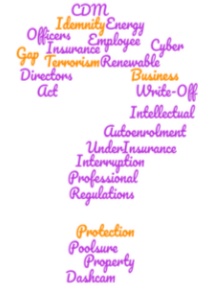
Insuring a new car? Mind the GAP!
Everyone knows that as soon as you drive a vehicle off a forecourt you lose a few £1000 or so. The AA say on average, cars lose 60% of their original value after three years and most people accept depreciation as part of owning a vehicle and factor it in to the buying or financing process. This is fine if you keep the vehicle for the period anticipated, but it can all go wrong if its stolen or written off in an accident, when with few exceptions, insurers pay the market value of the vehicle. This means there could be a difference between the insurance pay out and the cost of buying a replacement or the amount outstanding on the lease or finance arrangement, particularly if only a small deposit was paid or there is a ‘balloon’ payment.
However, there is an answer in the form of GAP Insurance (short for Guaranteed Asset Protection) and there are various forms available to cover the difference between the insurance ‘total loss’ pay out and either the amount you paid for the vehicle in the first place, the amount of outstanding finance, or to guard against the rising cost of replacing a vehicle.
There are a number of GAP covers suited for privately or commercially owned vehicles offering protection whether you have bought the vehicle outright or if it is on finance, leased or contract hire. These include Fleet GAP policies to cover all vehicles up to 44 tonne and under 10 years of age at inception of the policy and so long as they are comprehensively insured, provide a 25% top of the motor insurer’s total loss settlement figure or the difference between the motor insurer’s total loss settlement figure and the outstanding amount owing to the finance/lease company, whichever is the greater (up to an agreed sum insured).
Unfortunately, GAP cover has not had the best reputation in recent years and has been considered as a bit of a rip off. It is a sound insurance product, but somewhat overpriced when sold by dealers and finance companies as an add-on as part of a ‘deal’ to buy or finance a vehicle. A recent Financial Conduct Authority (FCA) investigation has shown that of the premiums collected from such ‘deals’ only 10% was paid in claims, leaving a very lucrative margin for the dealers and insurers. However, far more competitive pricing has been available for some time for GAP arranged through other channels such as insurance brokers and the FCA has now stepped in.
From 1 September 2015, new regulations come into place for GAP insurance either sold along with a vehicle or finance/lease arrangement. It will have to be clear that policies can be arranged independently from another source and must be introduced to the customer at least 4 days before it is incepted to prevent it being sold on the same day as the vehicle and to give the customer the chance to consider the product properly and look for alternatives. A higher rate of IPT (insurance premium tax) of 20% has also been introduced for add-on sales as part of buying or financing a vehicle, whereas it stays at the standard rate (currently 6%, but soon to be 9.5% following the Chancellor’s last budget) when arranged independently and not part of a ‘deal’.
As ever, the devil can be in the detail with insurance, but there are very reasonably priced policies available, so long as you check it is suitable for your circumstances and obviously using an insurance broker will help.


Recent Comments